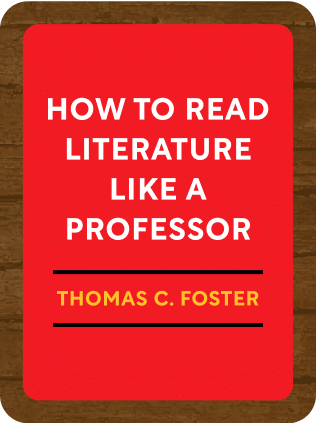

This article is an excerpt from the Shortform book guide to "How to Read Literature Like a Professor" by Thomas C. Foster. Shortform has the world's best summaries and analyses of books you should be reading.
Like this article? Sign up for a free trial here .
What does it mean when authors reference the Bible in literature? What biblical symbols should you be on the lookout for?
Authors commonly reference the Bible to deepen the meaning of their work. Many authors also use the Bible to highlight the differences between religious tradition and modern life.
Keep reading to learn why the Bible is so commonly referenced in literature and what those references may mean.
Sacred Texts and Literature
In order to truly read literature like a professor, you need to be on the lookout for references to “sacred texts,” like Shakespeare, classic fairy tales, and ancient myths, and the Bible in literature.
Using recognizable themes or plots from these sacred texts gives the author the chance to use the reader’s associations to say more in their own work with fewer words. And for the reader, recognition of these references enhances the experience of current literature, because the modern stories share in the power of the sacred text.
The Bible in Literature
Like Shakespeare’s work, the Bible is an age-old and widely-known text that provides authors (even non-religious ones) the chance to deepen the meaning of their work with relatively few words.
In literature, the Bible inspires:
- Plots
- Titles
- Character names
- Quotations
Think of some of the common stories from the Bible: Judgement Day, the Fall, the Prodigal Son. Have you seen these stories mirrored in literary works before? Chances are, you have.
Example: In James Joyce’s story “Araby,” a young boy feels desire for the first time, so he tries to buy a gift for the object of his desire. In the process, he realizes that his affections are just the ordinary kind, and that this girl will probably never love him. Any story, like this one, that is about a loss of innocence is really a story about the Fall of man.
Many authors use the Bible to highlight the differences between religious tradition and modern life.
- Example: Ernest Hemingway used the title The Sun Also Rises, which alludes to a passage from the Bible that is about life’s endless cycle. The passage reminds us that every night is followed by a new day, and every death is followed by new life. But Hemingways’ book is about hopelessness—it’s about infertility and the feeling that the future will never come. Hemingway’s ironic biblical reference is meant to highlight a key theme for the reader.
How to Look for Biblical Allusions
If you read something that seems to resonate more deeply than the story itself, chances are it comes from something bigger, like a Bible story. If a quotation sounds different than the rest of the story’s prose, take note.

———End of Preview———
Like what you just read? Read the rest of the world's best book summary and analysis of Thomas C. Foster's "How to Read Literature Like a Professor" at Shortform .
Here's what you'll find in our full How to Read Literature Like a Professor summary :
- How to get more out of the novels that you read
- Why you should focus on memory, symbols, and patterns to understand literature better
- Why sex scenes aren't always about sex






